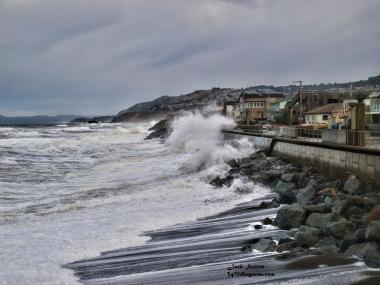
Beaches are highly influenced by storm conditions. Normally, beaches experience an annual cycle. Winter storms erode sand away and summer waves slowly push it back onshore.
Larger storms, like the ones associated with the El Niño Southern Oscillation and the Pacific Decadal Oscillation, can influence the width of beaches in Southern California.
Storms can change wrack supply to beaches, directly harm beach biota, and decrease dune stability.
Climate change is expected to increase the overall intensity and frequency of storms worldwide. However, for California specifically, little change is expected according to current scientific studies. Still, a normal storm event will likely cause greater damage to the shoreline because of higher water levels from sea level rise.
Similarly, when El Niño events bring periods of increased storm activity, these storms may do more damage to the shoreline with elevated sea level. El Niño events are complex and difficult to predict but research indicates they may become more frequent with climate change.
King Tides
Computer models and simulations can give us an idea of what future storms may look like, but there is also another way. King tides are super high tides that occur when the gravity of the sun and moon are in alignment. These king tides show us what higher water levels may look like in the future.




